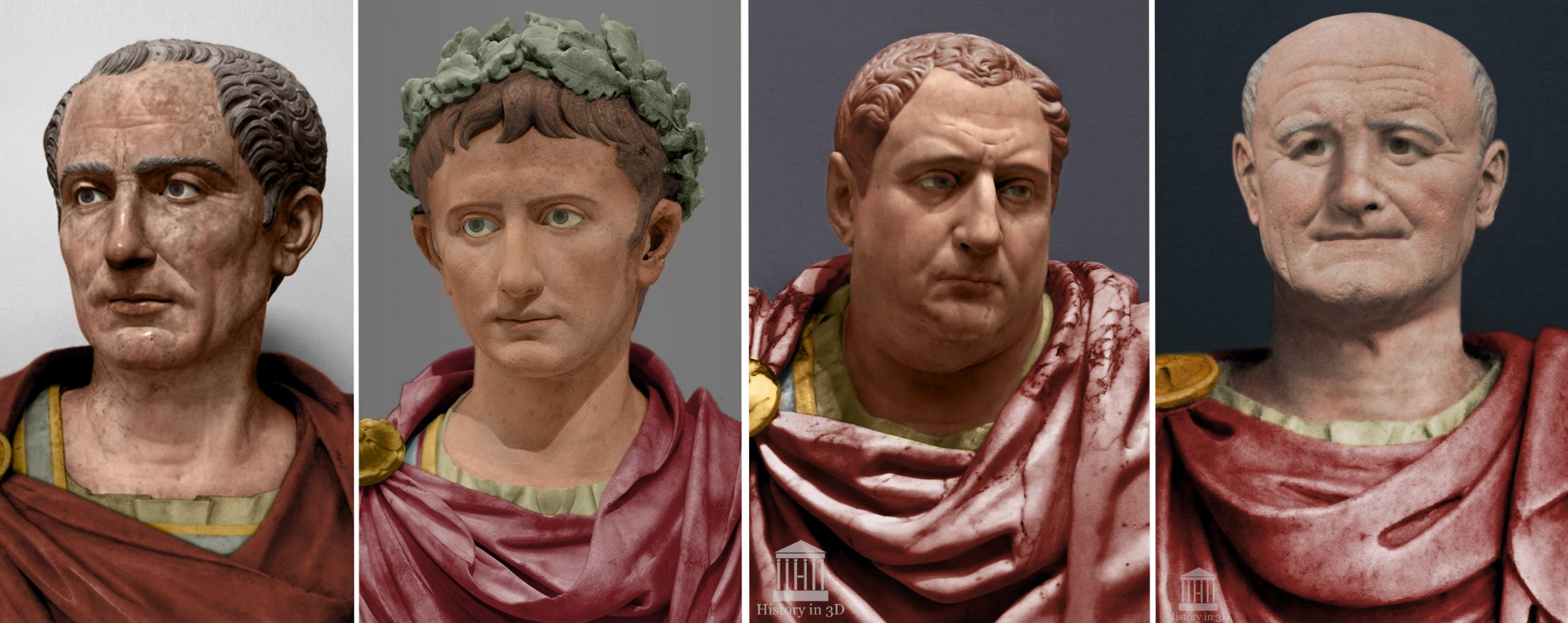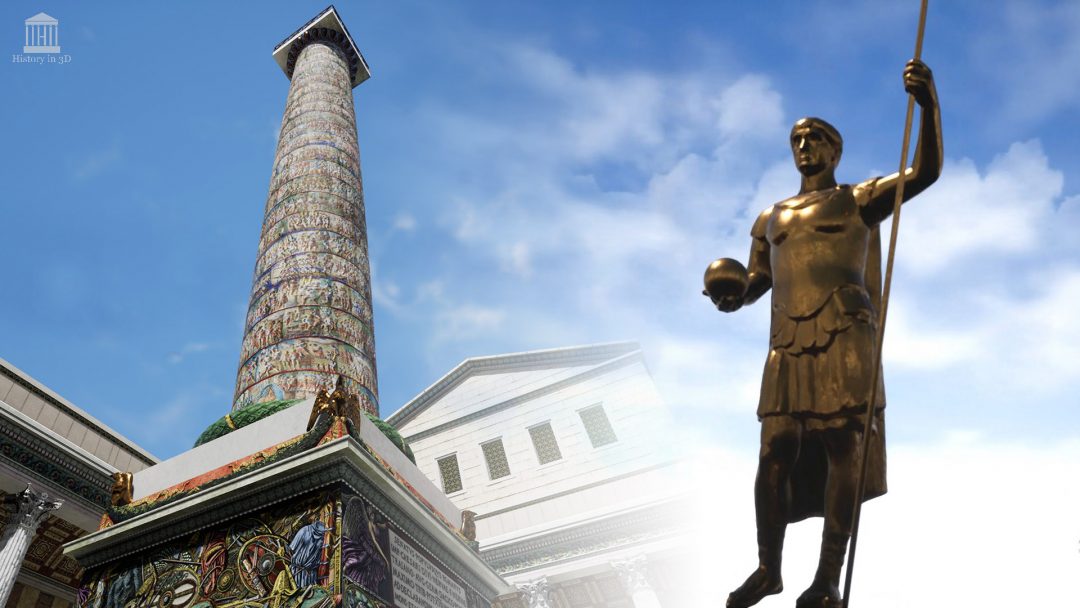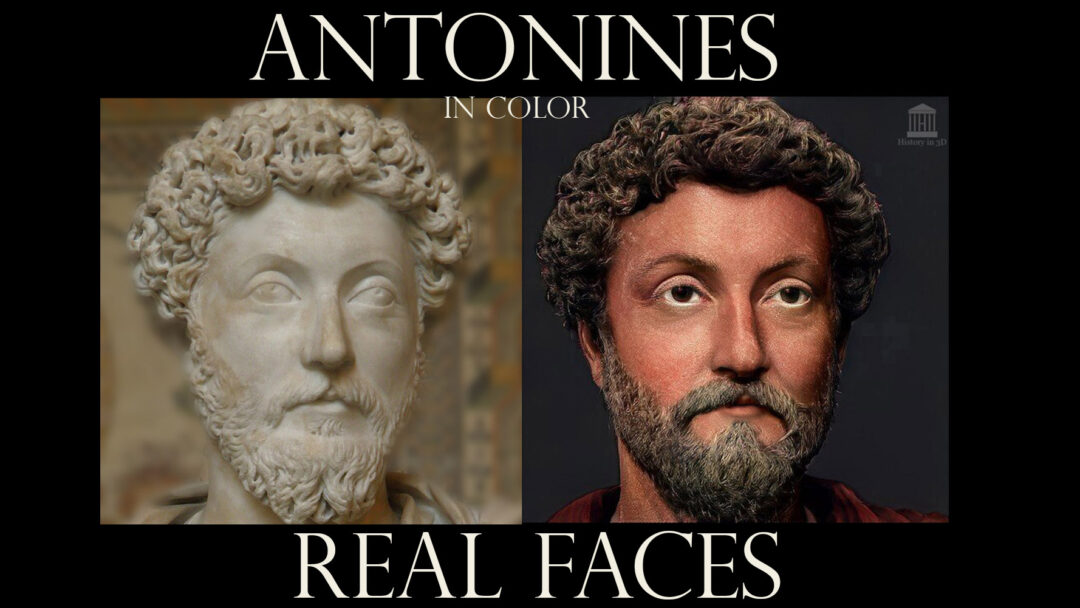We’ve seen a lot of projects have appeared in 2020, which attempt to recreate the appearance of ancient Romans and Greeks as they looked like in reality. Unfortunately, most of them use auto generate software to create faces basing on sculptures photos, and they don’t make an effort to make the qualified post-production, and as a result, the portraits lose resemblance to their prototypes, and even become similar to one another.
Our project “Romans in 3D” started in 2019 (even looks like we’ve started this trand, lol) and we’re working in two directions:
1) reconstruction of the polychromy of sculptures, that is, an attempt to show how ancient sculptures looked initially
2) a realistic and accurate reconstruction of the appearance of the Roman people based on the surviving portraits.
Ultimately, our goal is to create portraits for all significant people of antiquity, but we want our work to be truly high-quality, and based on modern scientific researches and ancient sources. Therefore, the project is not progressing as fast as we would like. But today I present to you reconstructed sculptural portraits of the first 12 Roman Caesars (by Suetonius):
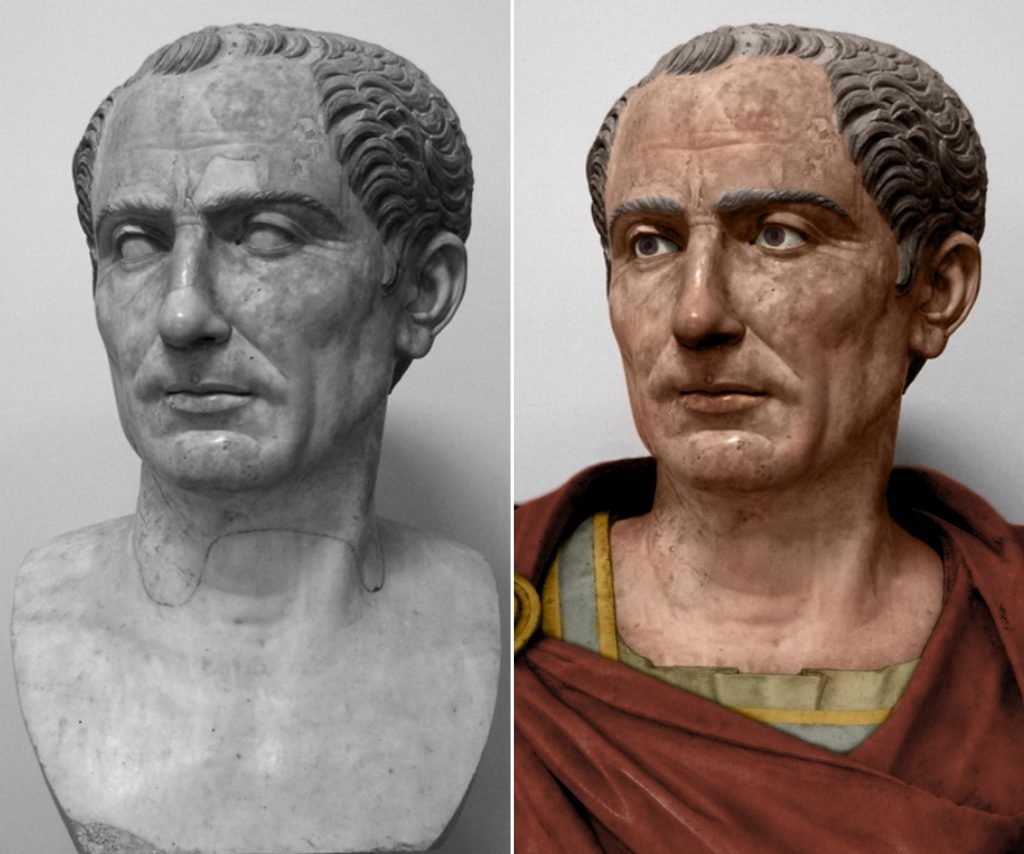
Bonus: animated Caesar
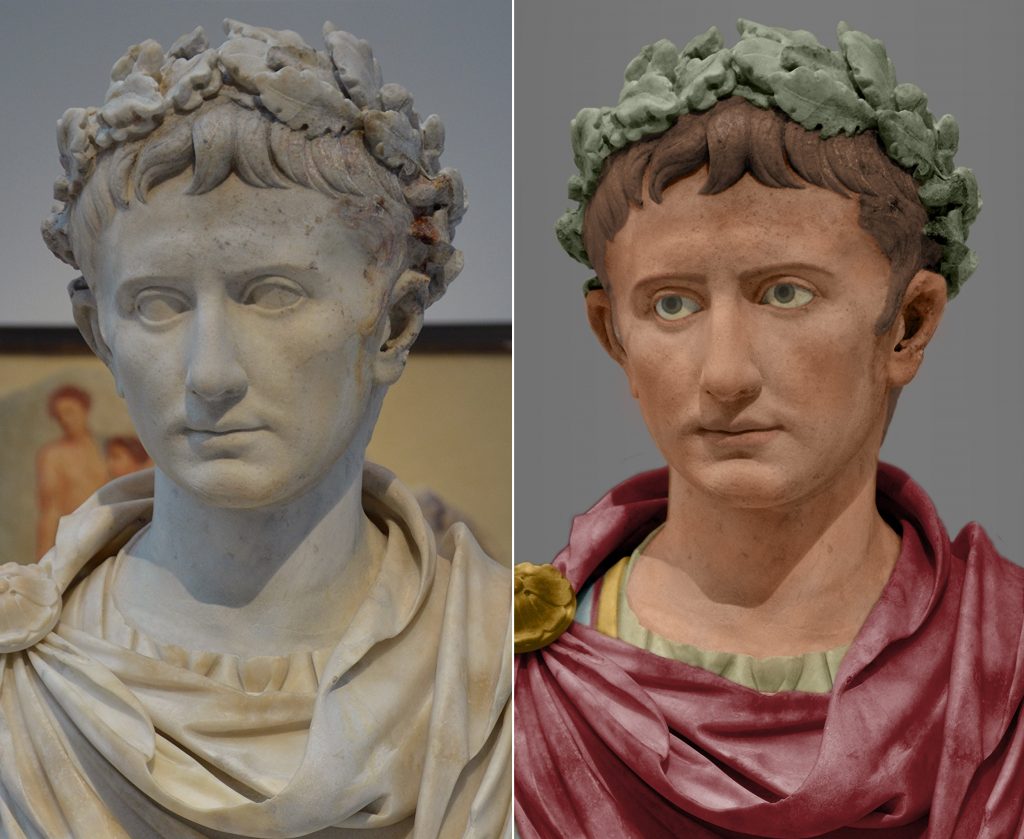
Emperor AUGUSTUS (63 BC – 14 AD)
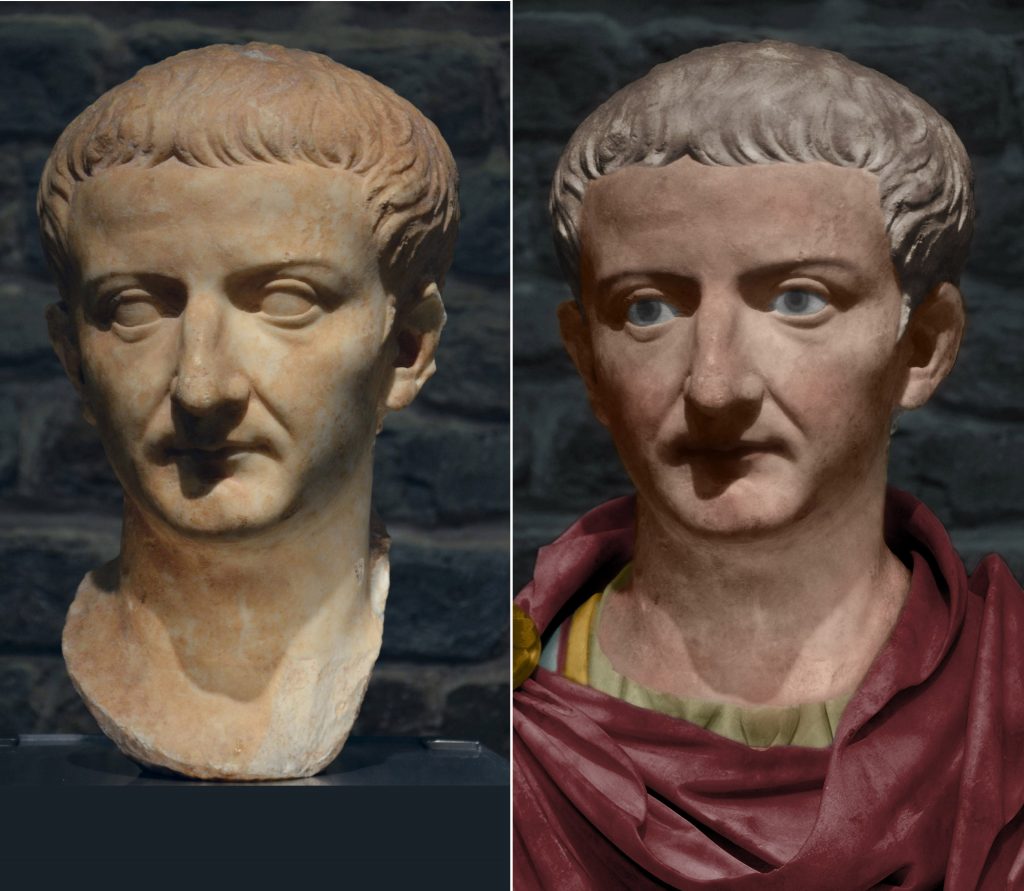
Emperor TIBERIUS (42 BC – 37 AD)
“He never let what he desired appear in his conversation, and what he said he wanted he usually did not desire at all. On the contrary, his words indicated the exact opposite of his real purpose; he denied all interest in what he longed for, and urged the claims of whatever he hated ” – Cassius Dio.
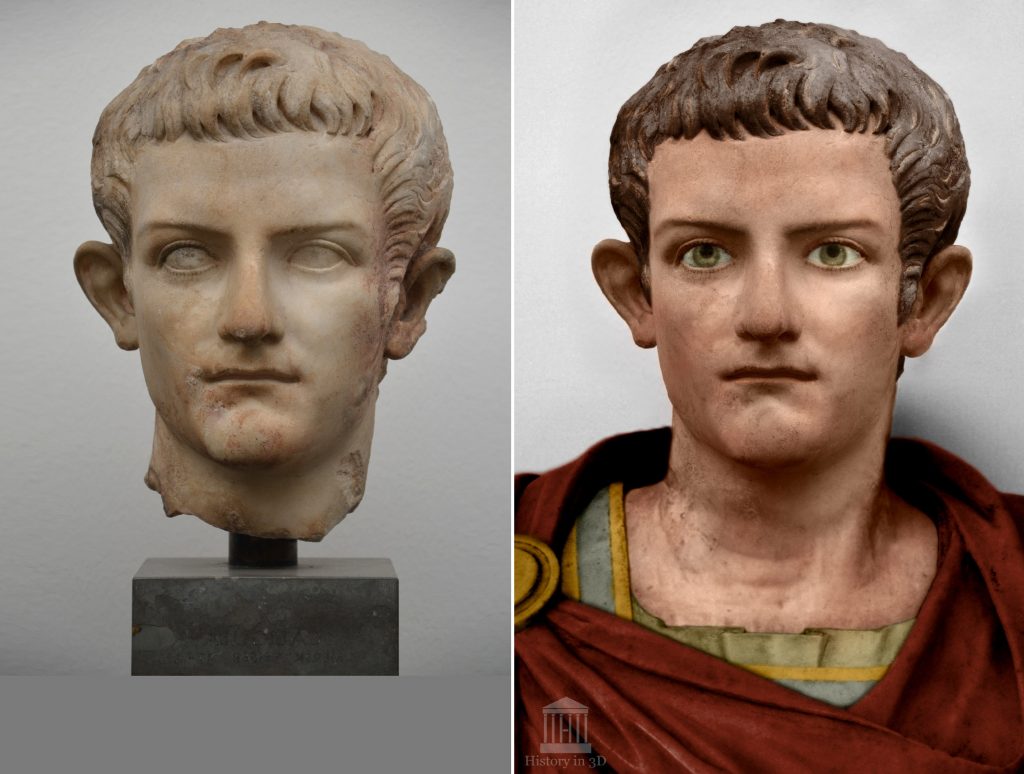
Emperor GAIUS (Caligula) (12 – 41 AD)
He delighted by turns in vast throngs of men and in solitude; he grew angry if requests were preferred, and again if they were not preferred. He would display the keenest enthusiasm about various projects, and then carry out certain of them in the most indolent fashion. He would spend money most unsparingly, and at the same time show a most sordid spirit in exacting it. He was alike irritated and pleased, both with those who flattered him and with those who spoke their mind frankly. Many who were guilty of great crimes he neglected to punish, and many who had not even incurred any suspicion of wrong-doing he slew. His associates he either flattered to excess or abused to excess. As a result, no one knew either what to say or how to act toward him, but all who met with any success in this respect gained it as the result of chance rather than of shrewd judgment” – Cassius Dio.
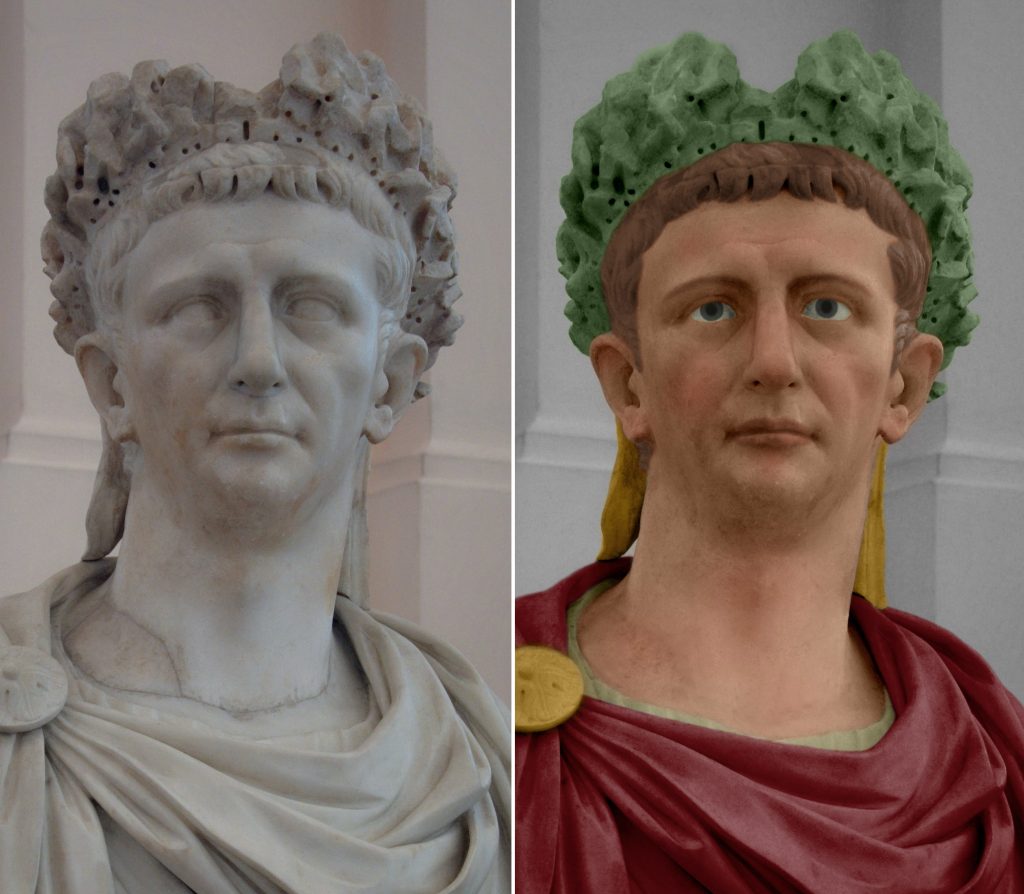
Emperor CLAUDIUS (10 BC – 54 AD)
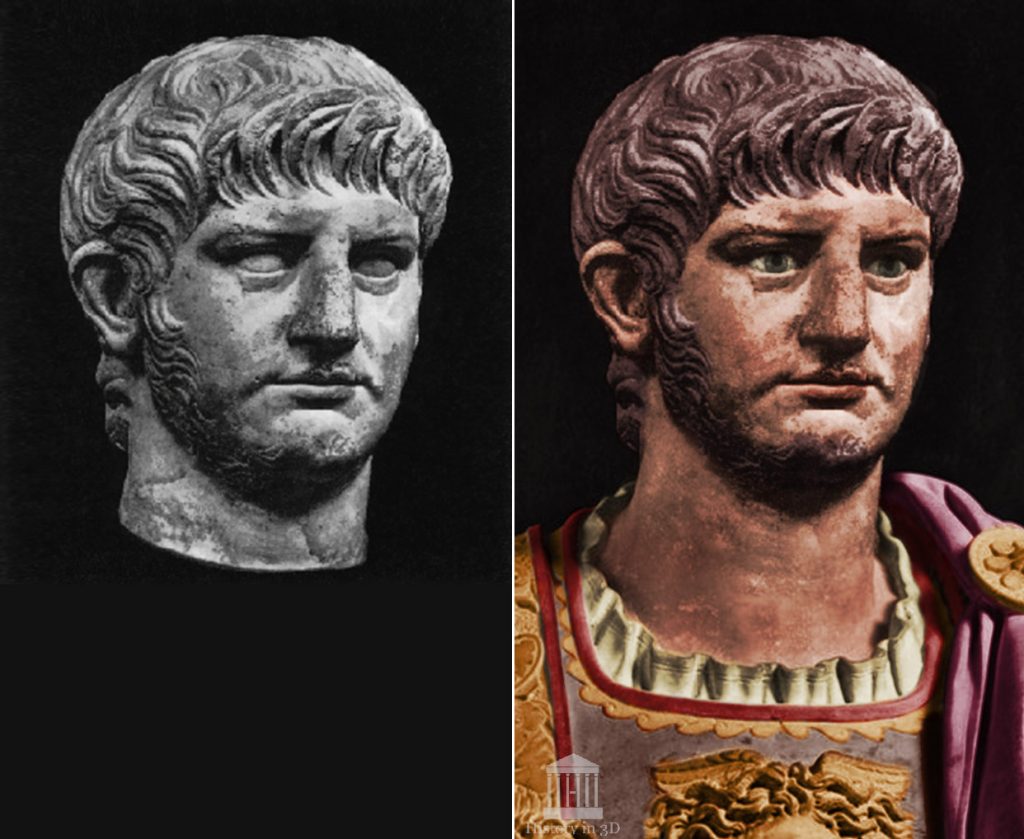
Emperor NERO (37 – 68 AD)
“Although for a long time, while remaining young, he ruled the state despotically for as many years as his stepfather, he was such a ruler in the first five years, especially with regard to expanding the borders of the Empire, that Trayan often justifiably repeated that the management of all principes was much inferior to that 5 years of Nero” – Aurelius Victor.
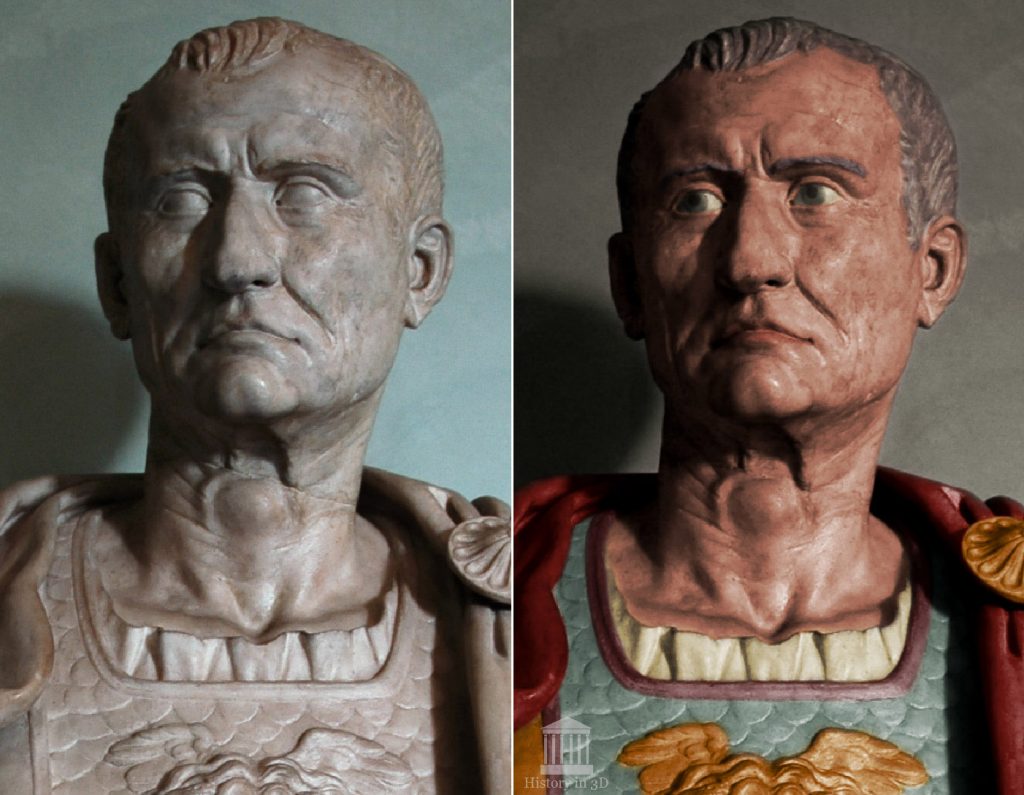
Emperor GALBA (3 BC – 69 AD)
“He seemed too great to be a subject so long as he was subject, and all would have agreed that he was equal to the imperial office if he had never held it” – Tacitus.
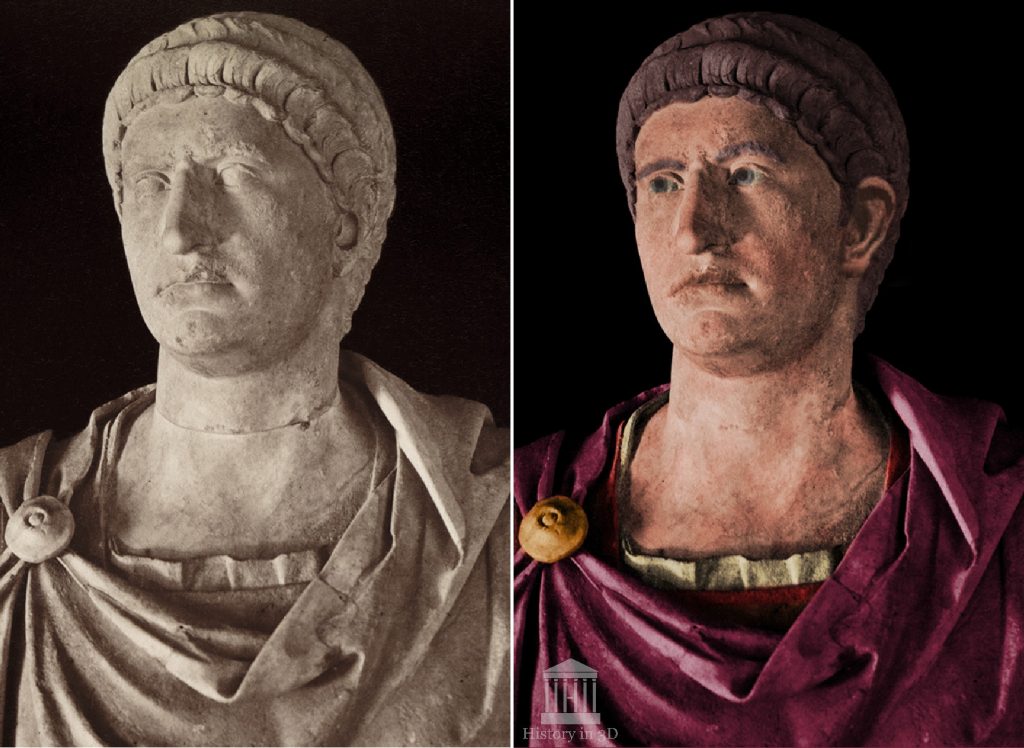
Emperor OTHO (32 – 69 AD)
“When he was gone, those who applauded his death were no fewer or less illustrious than those who blamed his life. For though he lived no more decently than Nero, he died more nobly.” – Plutarch.
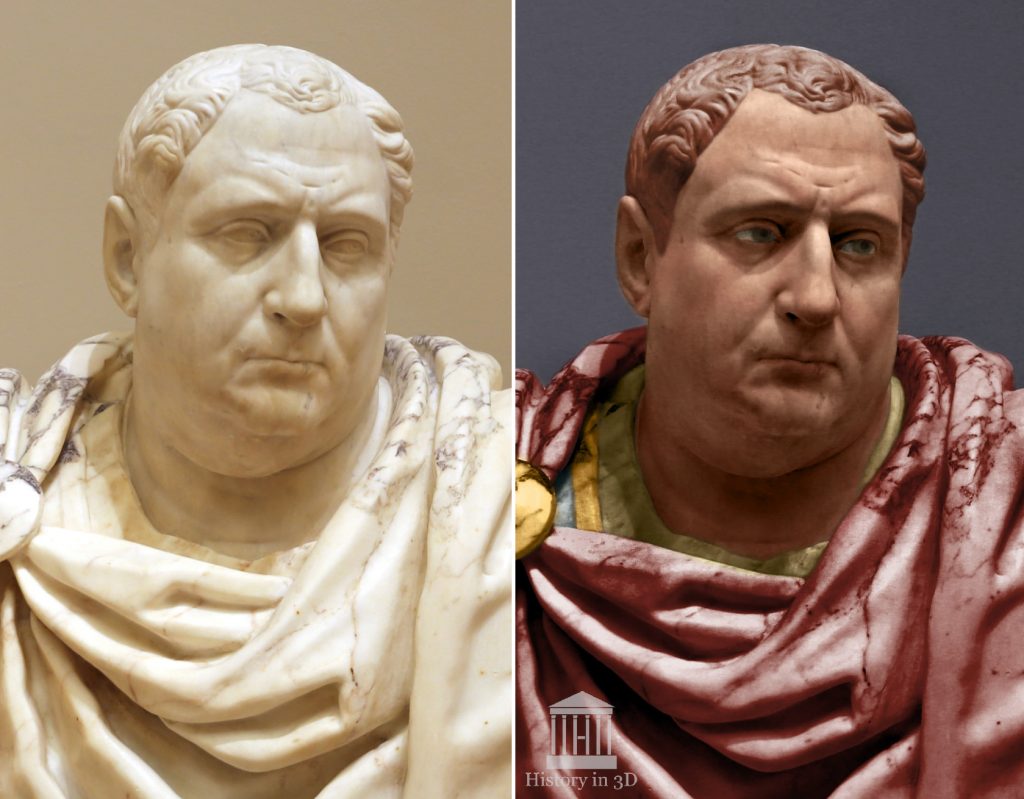
Emperor VITELLIUS (12 or 15 AD – 69 AD)
“Vitellius, compelled by threatening swords, first to raise his face and offer it to insulting blows, then to behold his own statues falling round him, and more than once to look at the Rostra and the spot where Galba was slain was then driven along till they reached the Gemoniæ, the place where the corpse of Flavius Sabinus had lain. One speech was heard from him shewing a spirit not utterly degraded, when to the insults of a tribune he answered, “Yet I was your Emperor.” Then he fell under a shower of blows, and the mob reviled the dead man with the same heartlessness with which they had flattered him when he was alive.” – Tacitus.
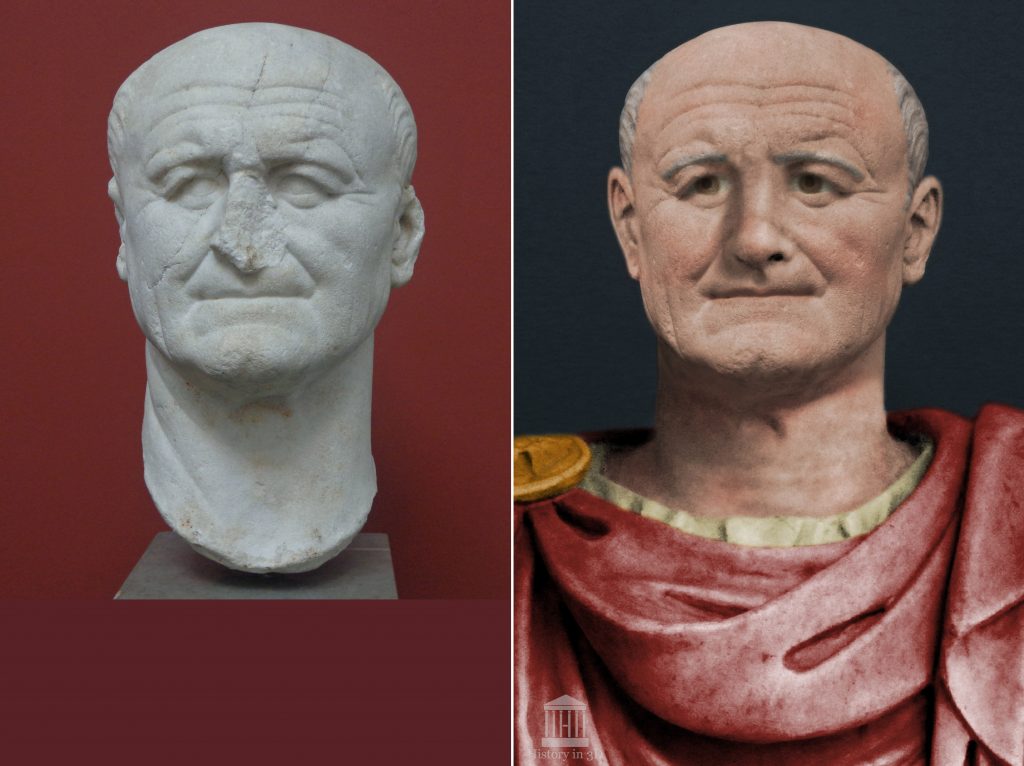
Emperor VESPASIAN (9 – 79 AD)
“Not only at dinner but on all other occasions he was most affable, and he turned off many matters with a jest. When he was importuned by a woman, who said that she was dying for love for him, he took her to his bed and gave her four hundred thousand sesterces for her favours. Being asked by his steward how he would have the sum entered in his accounts, he replied: “To a passion for Vespasian.” – Suetonius.
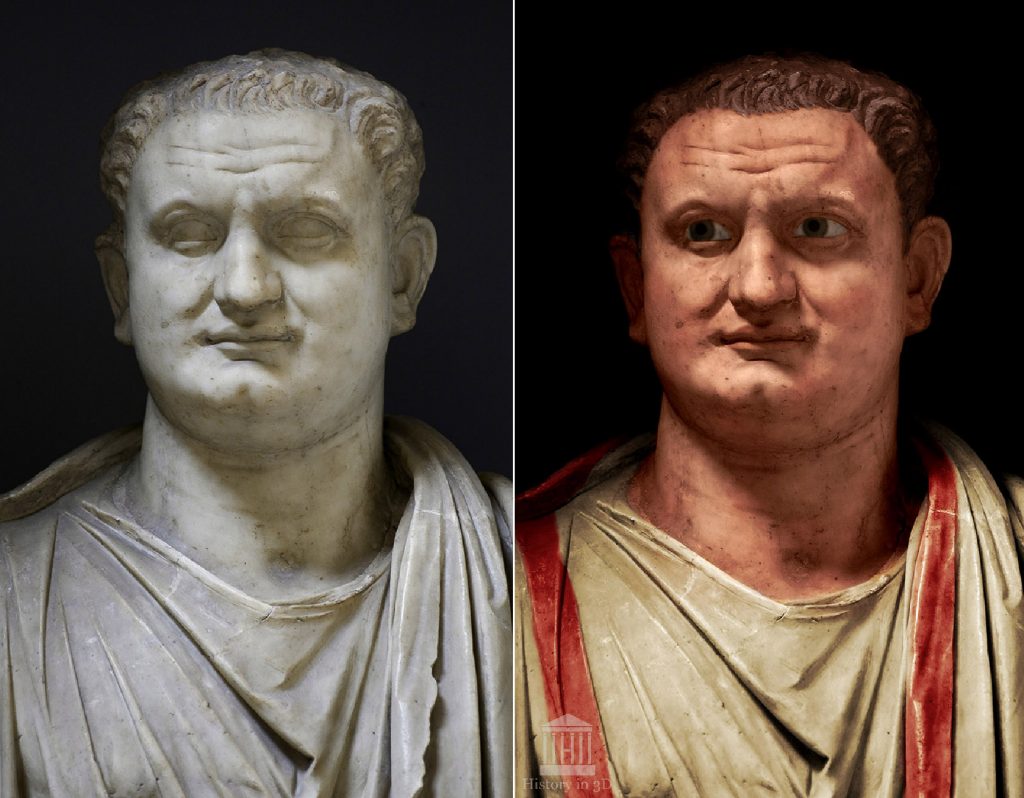
Emperor TITUS (39 – 81 AD)
Cases based on the charge of maiestas he would never entertain himself nor allow others to entertain, for he declared: “It is impossible for me to be insulted or abused in any way. For I do naught that deserves censure, and I care not for what is reported falsely. As for the emperors who are dead and gone, they will avenge themselves in case anyone does them a wrong, if in very truth they are demigods and possess any power.” – Cassius Dio
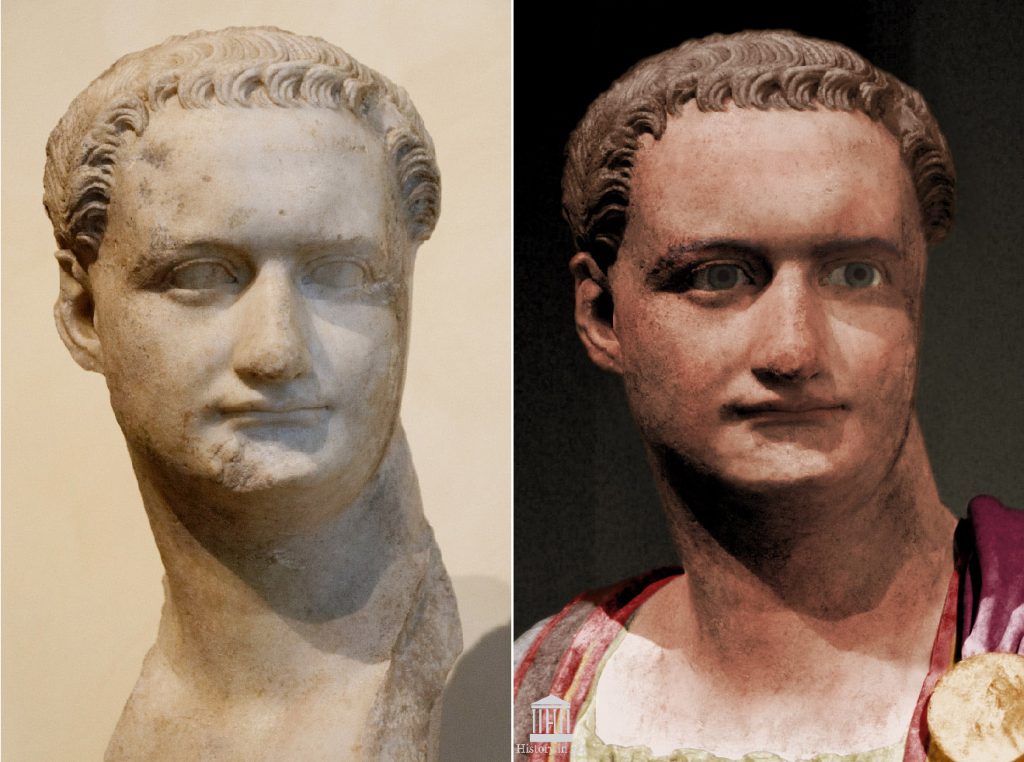
Emperor DOMITIAN (51 – 96 AD)
One of the most interesting, extraordinary and controversial Roman emperors, as I think.
«An emperor who does not punish informers hounds them on. Those emperors who did not visit punishment upon many men were not good emperors, but only fortunate.» – Domitian.
Original photos: Carole Raddato (https://followinghadrian.com/), Sergey Sosnovskiy (CC BY-SA 4.0), Edelseider CC BY-SA 4.0, Sailko CC BY-SA 4.0, or Public Domain.
